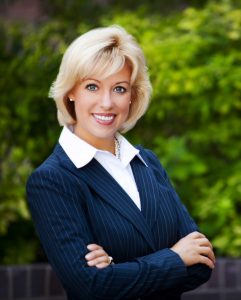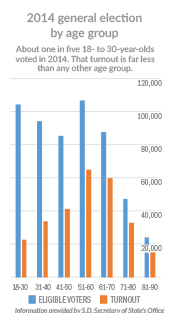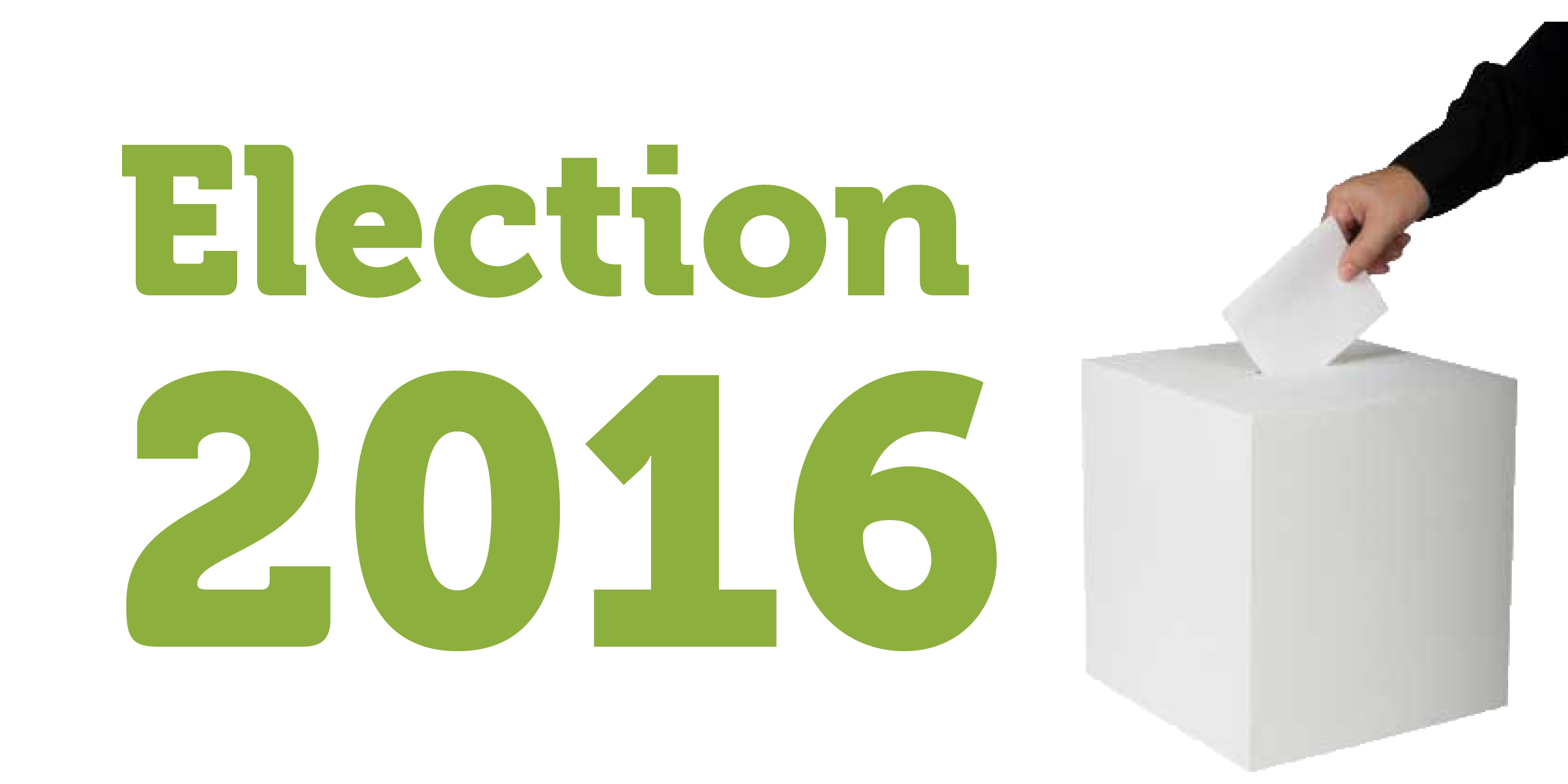By Kristin Brekke Vandersnick for Dakotafire Media
Secretaries of state are the chief election officers, the ones charged with ensuring that elections are fair and efficient. But does that role include attending to voter turnout—one area where the United States has some room for improvement?
Turns out, that depends on whom you ask. The election chiefs in the two Dakotas have decidedly different views on the matter.

South Dakota Secretary of State Shantel Krebs said her office actively seeks out voters—particularly those in the state’s least-represented demographic.
“South Dakota always ranks top ten in the nation as far as voter turnout,” Krebs said. “However, there is an age group where we lag behind regionally and nationally: those ages 18 to 30.”
While South Dakota’s overall voter turnout in the last presidential election was above 60 percent, only 36 percent of the state’s 18- to 30-year-old age group made it to the polls. Nationally, this age group voted to the tune of 46 percent, and regionally—in the Dakotas, Minnesota and Iowa—young voter turnout was 57 percent.
“We do know that we have an area that we need to work on,” Krebs said.
Her office sends letters to high school government classes, reminding students to register to vote when they turn 18, and by Election Day Krebs will have visited dozens of schools speaking to students directly about the importance of this civic duty.
North Dakota Secretary of State Al Jaeger looks at voter turnout differently.

“That, to me, is not my job,” said North Dakota Secretary of State Al Jaeger. “My job is to be sure that we administer elections in a fair and efficient manner, and educate the people about the process of voting. I’m not comfortable using taxpayer money to increase voter turnout. I will use it to educate the people about the voting process, and then it’s up to them to decide whether to vote.”
Jaeger says he believes he couldn’t affect turnout anyway.
“There isn’t a Secretary of State in the country who has the power to increase voter turnout,” he said. “Voter turnout is completely driven by issues, candidates and what’s on the ballot.”
Krebs agrees with Jaeger that voter turnout is heavily influenced by the election’s people and topics.
“I do agree that it’s issue- or candidate-driven,” Krebs said. “I just want to make sure people are aware of the process. You don’t necessarily have to physically come to the polling place on Election Day. We need to show how easy voting is to do.”
A good showing
Nationally, North Dakota is a top performer in voter turnout. Its 2014 voter turnout averaged across the primary and general election was 45 percent, identical to South Dakota’s. In 2012, the two states’ voter turnout results were within one percentage point: 60.1 in South Dakota, 61.1 in North Dakota.
These figures come from The Pew Charitable Trust’s Elections Performance Index, a comprehensive report that uses 17 key indicators to compare election administration policy and performance across states, and from one election cycle to the next.
“Perhaps the most highly visible measure of the health of elections is the turnout rate—that is, the percentage of eligible voters who vote,” according to the EPI. “It is affected by many factors election administrators do not control, including voter interest, demographics, political culture, history, and even weather. At the same time, turnout rates can help measure the impact of election administration practices and policies.”
In Pew’s 2014 EPI, South Dakota was ranked 21st in the nation, and North Dakota was ranked first for the fourth consecutive time.
“We’re very pleased with that,” Jaeger said. “We’ve worked very hard on establishing what the Legislature had in their good election law and setting a good process for administering elections.”
Although the National Association of Secretaries of State doesn’t take an official stance on the EPI results, spokesperson Kay Stimson says there is a great deal of respect within the elections community on the work Pew has done—specifically, how the EPI has taken what once was anecdotal and turned it into a data-driven conversation.
“Their drive was to make sure the conversation has more data,” Stimson said. “The EPI is a good step for identifying parts of the process that are working and parts of the process that need improvement.”
Stimson noted that voter registration is one of the factors driving up North Dakota’s ranking.
So, if Jaeger and his staff aren’t actively recruiting voters, what’s bringing them to the polls? He surmises it’s the state’s simplistic voting strategy: voters are not required to register prior to voting.
“Rather than people having to go and register ahead of time, it’s done right in the process of voting,” he said.
Jaeger added that not having to manage a separate registration database helps the state avoid problems, such as duplicates, errors or the need to cleanse the database of deceased persons.
“There is a bureaucracy involved there that is significant,” he said.
Calling young voters
In South Dakota, eligible residents can register to vote any time up to 15 days before an election (this election cycle, that was Oct. 24). The registration form is available online, but it must be printed out and an original signature presented at the auditor’s office in the county where the voter lives.
According to Krebs, South Dakota voter registration numbers are strong, at about 536,000 in early October. As of 2014, there were about 643,000 voting-age adults in South Dakota. But registration doesn’t automatically bring voters to the polls.
Nearly 105,000 18- to 30-year-olds were among those registered in 2014. Only 22,000 of them—1 in 5—voted in the last election.

“Among 18- to 30-year-olds, voter registration is strong, but it does not correlate necessarily to turnout,” Krebs said.
During her visits to South Dakota schools, students have shared with Krebs two main reasons they are disinclined to vote: “They don’t feel that their vote counts, and they also feel a lack of trust in government and the candidates,” she says.
This issue of trust mirrors findings on a national level. A recent Pew Research Center study shows that only 19 percent of Americans say they can trust the government “always” or “most of the time.” In 1958, that trust level was at 77 percent.
During her outreach efforts, Krebs communicates to students that their vote does indeed count, especially in local elections, where outcomes can be influenced by as few as one or two votes. On the trust issue, Krebs predicted the disconnect to be that young voters don’t know the candidates or aren’t taking the time to know the issues. Meaningful conversations about candidates and their stances may help build trust, and result in voter turnout.
“The statistic needs to be shared … that this age group isn’t turning out to the polls,” she said, noting that she hoped that the topic of voting will become dinner-table conversation and stay top-of-mind for young voters and parents alike.
Need voting information? Start here.

Leave a Reply